Best cookie box art ever
I love this Girl Scout cookie box! Who wouldn’t fall in love with birds after meeting a Eurasian Eagle Owl?
I’m testing out posting with my iPhone.
I love this Girl Scout cookie box! Who wouldn’t fall in love with birds after meeting a Eurasian Eagle Owl?
I’m testing out posting with my iPhone.
… literally! Some of the twelve birds featured in this 2012 Backyard Birds Mini Calendar may be Backyard Birds, but you’d never find them all in the same back yard.
Northern Cardinals are native to eastern North America.
Cedar Waxwings live across much of North America.
Wren is kind of non-specific for a calendar published in Indiana, but it probably refers to the Eurasian Wren, which is commonly referred to as simply “wren” and is native to Europe and Asia.
Great Tits are back yard birds through much of Europe and are also found across Asia and north Africa.
White-crowned Sparrows live across much of North America.
Great Spotted Woodpeckers live in parts of Europe and Asia.
Steller’s Jays live across western North America.
Oriental White Eyes are found in tropical Asia. I can’t find any evidence of them frequenting feeders.
Siberian Rubythroats live in Siberia, natch. They eat insects.
Vermilion Flycatchers (spelled Vermillion on the calendar) live in the Americas, from the American southwest through much of South America.
I’m having a hard time figuring out what a “Common Tree Pie” is supposed to be, but it looks like a White-winged Redstart, native to southwest and central Asia. They eat insects.
Finally, the Azure Kingfisher is native to Australia and neighboring islands. However, the bird identified as such looks more like a Common Kingfisher (native to Eurasia and Africa). If you’ve got a thriving body of water in your yard, you might count a kingfisher as a yard bird, but they’d certainly never be feeder birds.
On Amazon’s best seller list, this calendar ranks #258,859 in books. That seems a little high to me.
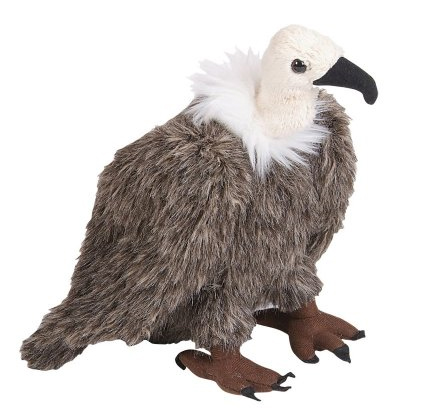
Today is International Vulture Awareness Day. It’s a day to reflect on the perils vultures are facing worldwide, to appreciate these natural recyclers, and to learn about vultures. Visit the IVAD website to learn more.
Last month we visited the fabulous and strange American Science & Surplus shop in Chicago. My dad used to take me to this oddball store when I was younger and I remember what fun it was for a curious kid to look through aisle after musty aisle of peculiar containers, mysterious military gear, unidentifiable tools and other baffling and strange things.
Among the treasures found on this last visit were some bird-themed goodies, natch.
This bird anatomy poster was made by Nova Rico of Florence Italy. I can’t find any information about it online as the company seems to specialize in globes now. The bird, organs and egg are all slightly raised. I’m not sure what kind of bird it is. It didn’t come with the key so I’m going to have some fun making that.
There were three different Fun Bendies Birdsticks to choose from. I rejected the purple pelican and green parrot for this blue toucan. It’s got a loop on the head for hanging but also comes on a long bendy stick. To hang or to stick, that is the question. The tag informs there are three other series of Fun Bendies: Flowersticks, Sticky Bugs, and Fishsticks.

Next I picked up two Endangered Species Reusable Stickers: Whooping Crane and California Condor. The condor one doesn’t ‘work’ anymore since the skeleton shows up in broad daylight. “Beautiful full color animals by day, glow in the dark skeletons by night!” How creepy is this?
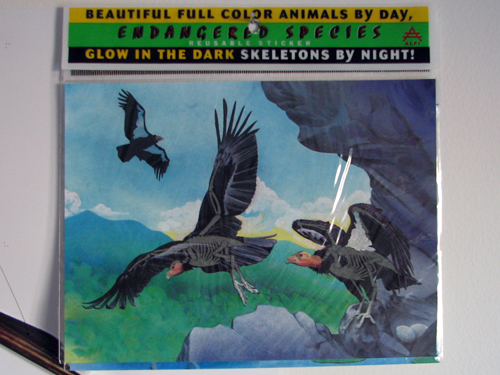
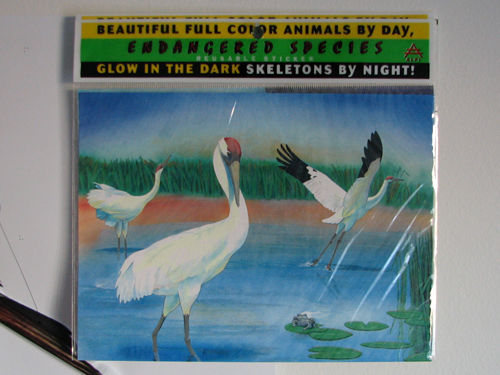
You’re probably familiar with this woodpecker friction toy I picked up. I hadn’t seen one in years. Minutes of fun, I tell you.
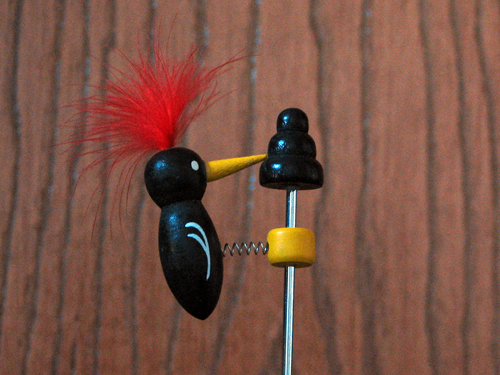
Today Arthur and my dad made a bird feeder pole for our back yard. First we all went to Home Depot to pick up the materials. The pole system is based on several feeders my parents have, all made by my dad. We used black pipes normally used for natural gas and/or plumbing systems. For this project we used:
One 2′ long, 1 inch diameter pipe (“the base”)
One 10′ long, 1/2 inch diameter pipe (“the long pole”)
One 18″ long, 1/2 inch diameter pipe (“the arm”)
One 1/2 T-section joint
Two 1/2 inch end caps
Two each: S-hook, nut/bolt, large washer, small washer
At Home Depot, we had an 18″ piece cut off the 10-foot pipe, and the cut side of the 18″ pipe threaded.
Here are Arthur and my dad preparing for the project. (My dad’s wearing dark glasses because he just had lens replacement surgery on his eyes.)
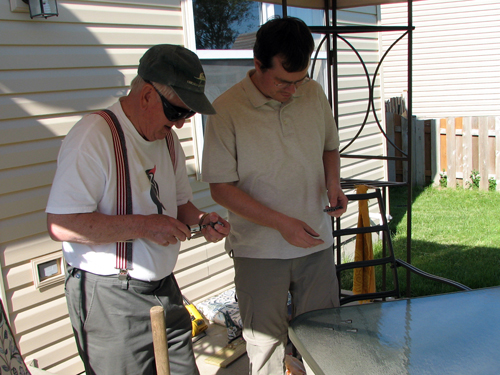
First, the T-section was screwed onto the top of the long pole.
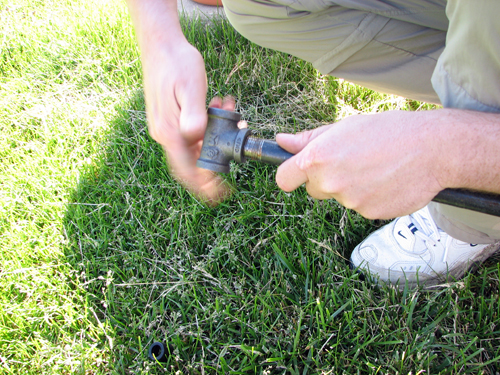
Both 18″ arms were then screwed into the sides of the T-section.
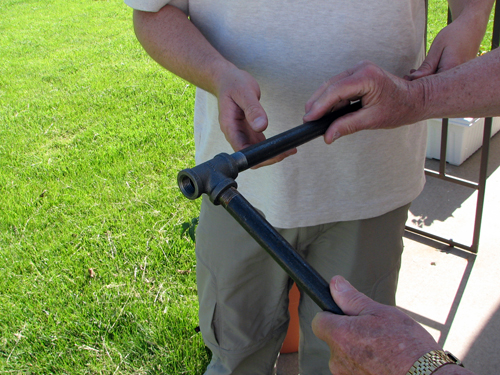
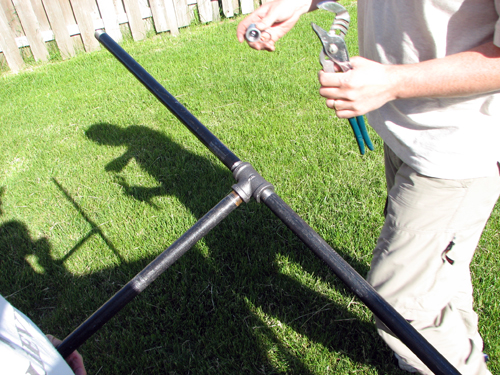
They used a drill to cut holes in the end caps and then used the bolts, nuts & washers to secure the S-hooks to the ends of the caps. Pliers were used to tighten the S-hook around the bolt. The end-caps were then screwed onto the ends of the arms.
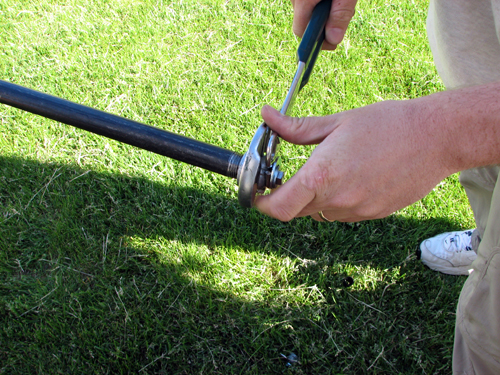
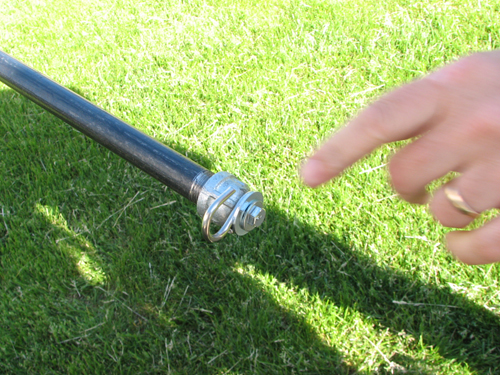
We then used a sledgehammer to pound the base pipe directly into the ground. We first hammered one end of the pipe in slightly, to prevent too much dirt entering the pipe from below. When the pipe was buried with only a few inches above the ground, we slid the long pole into the base. Since the pipes were not meant to nest this way, the long pole wobbled a bit. We used shims to make the fit more snug. I think the final result is pretty cool:

This system is much more substantial than the shepherd’s hooks we’re now using for our feeders. We can finally hang our Wingscapes Birdcam and hopefully get some more interesting shots than the ground images I’ve gotten over the past months. Here’s a sample we got late this afternoon.
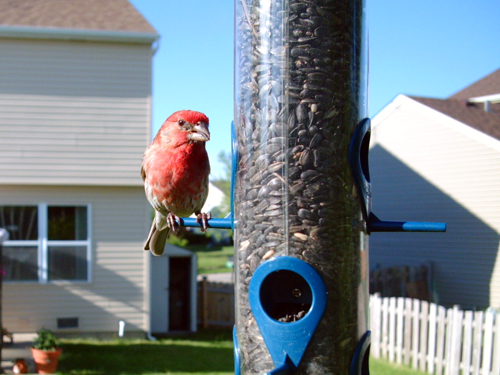
We picked up this cheap used birdbath at the Salvation Army shop last month for about $4. There was a small crack in the basin but otherwise it was in fine shape. It’s made of very lightweight plastic. The top screws off which makes it easy to thoroughly clean the bath when necessary.

To fix the crack, I got a tube of plumber-grade Goop for about $3.00. I applied half of the tube to the crack and let it dry for 24 hours.

We picked up four bricks at Menard’s for $1.00 to weigh the bath down. For less than $10 we now have a functional birdbath. I was very excited to spot the first customer last week: this Mourning Dove. Yay!
I’ve had my scope for a few weeks now and I’m really loving it. So far the most action it’s seen was last weekend on the Looney Trip. I’ve brought it out a few other times but mostly I use it every day to check out the birds hanging out in our back yard.
Now that I’m getting the hang of it, I want to try digiscoping. We got a universal adapter and tried out our old Canon A95 on it.

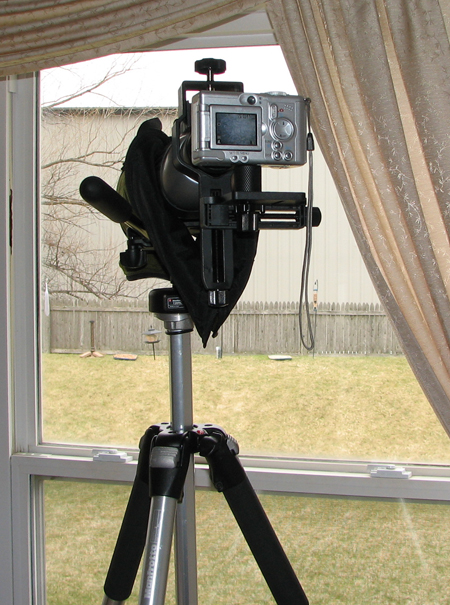
Meanwhile, I’ve tried digiscoping “by hand” a few times. Here’s a Dark-eyed Junco and our resident squirrel.
Side note: When we first moved in we were kind of bummed about the big warehouse behind our yard. But now that we’re peeping on the birds through binoculars and scope almost every day, we’re grateful for it. No neighbors back there thinking we’re spying on them!
Last Wednesday, we drove up to Appleton in Wisconsin to purchase a used spotting scope from a member of the Wisconsin Birding Network (wisb). It’s a Leica Televid 77 in great shape.
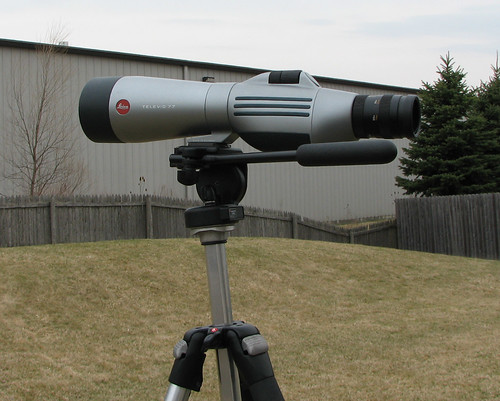
You’ll notice it’s a straight scope rather than angled. I’ve read that birders prefer to have an angled body for several reasons. However, some do prefer the straight body and it comes down to a personal preference. The deal on this used scope seemed pretty great so I decided to give the straight body a try. Before committing to buy the used Leica, we went to an optics shop to look at different scopes and body types. I really liked being able to keep my head straight when looking through the scope so I thought it would be fine to try the straight body Leica.
I also picked up the Manfrotto tripod (a discontinued model) that was for sale with the scope – but it came without the head. I ordered a Manfrotto head online and it arrived today!
I can’t wait to use it in the field – hopefully we can try it out sometime this week. I’m sure it will take some practice before I am used to carrying it and setting it up on a walk. Until then, I’m getting really nice looks at our back yard juncos, finches and doves. 😉
Via Twitter (I’m @Birdorable) the other day I saw that Cooper’s Design has a campaign to raise money for Ducks Unlimited. I made a donation in their name and scored a great Cooper’s Design t-shirt, which arrived in the mail yesterday!
The shirt came in this very cool I Give Ducks Bread tote bag. I think this logo is so cute – the duck has $$ in his bill!
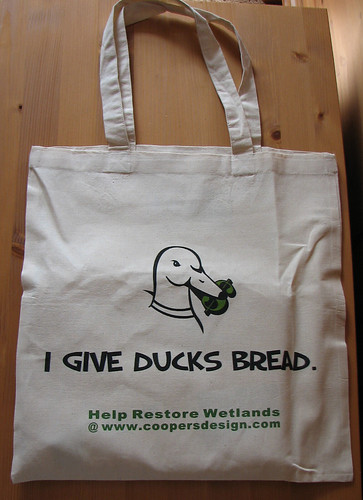
This is the front of the shirt:
And the large design on the back:
Ducks Unlimited is dedicated to preserving wetlands and waterfowl habitat.
Ducks Unlimited conserves, restores and manages wetlands and associated habitats for North America’s waterfowl. These habitats also benefit other wildlife and people.
If you’d like to make a donation, feed some bread ($$) to the ducks and help preserve wetlands, why not make a donation to Ducks Unlimited?
We’re in Bourgueil, France, which is a village in the Loire Valley known for fine red wines. But when we were out shopping today we picked up two brands of beer we couldn’t resist.
First we found Britt, from a brewer in Brittany, featuring an iconic bird of the region on the label, the Atlantic Puffin. There is even a puffin on the cap!
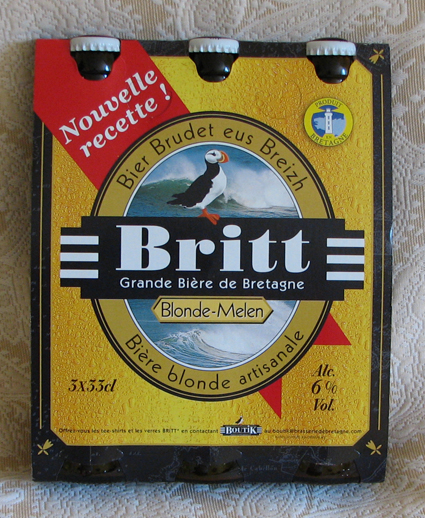
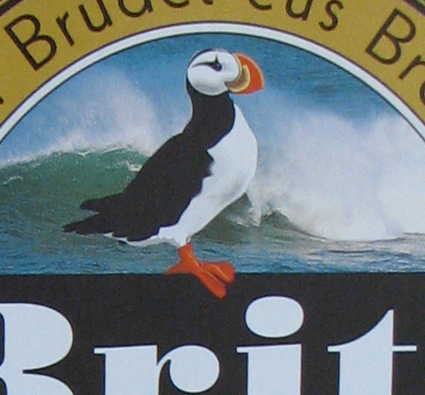
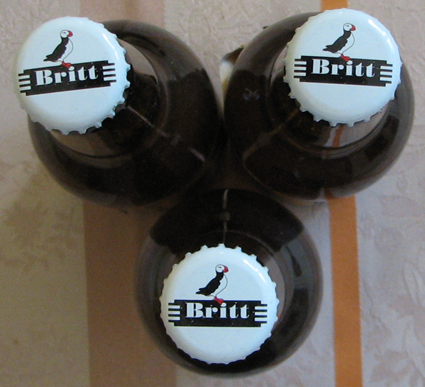

We also found La Becasse, which is actually a Belgian kriek (cherry beer), with a Eurasian Woodcock on the label. La Becasse is the French name for Eurasian Woodcock.
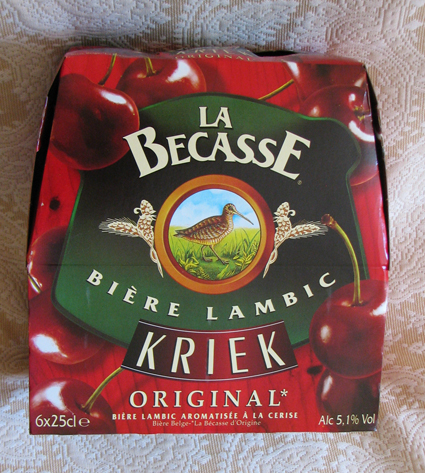
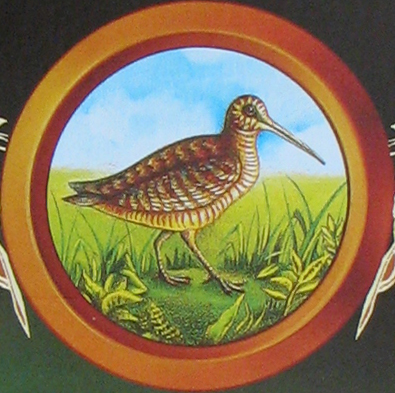

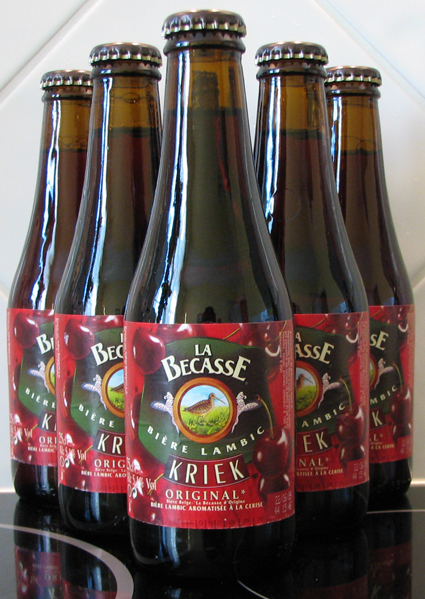
We haven’t tried them yet (we’re drinking wine, duh!)